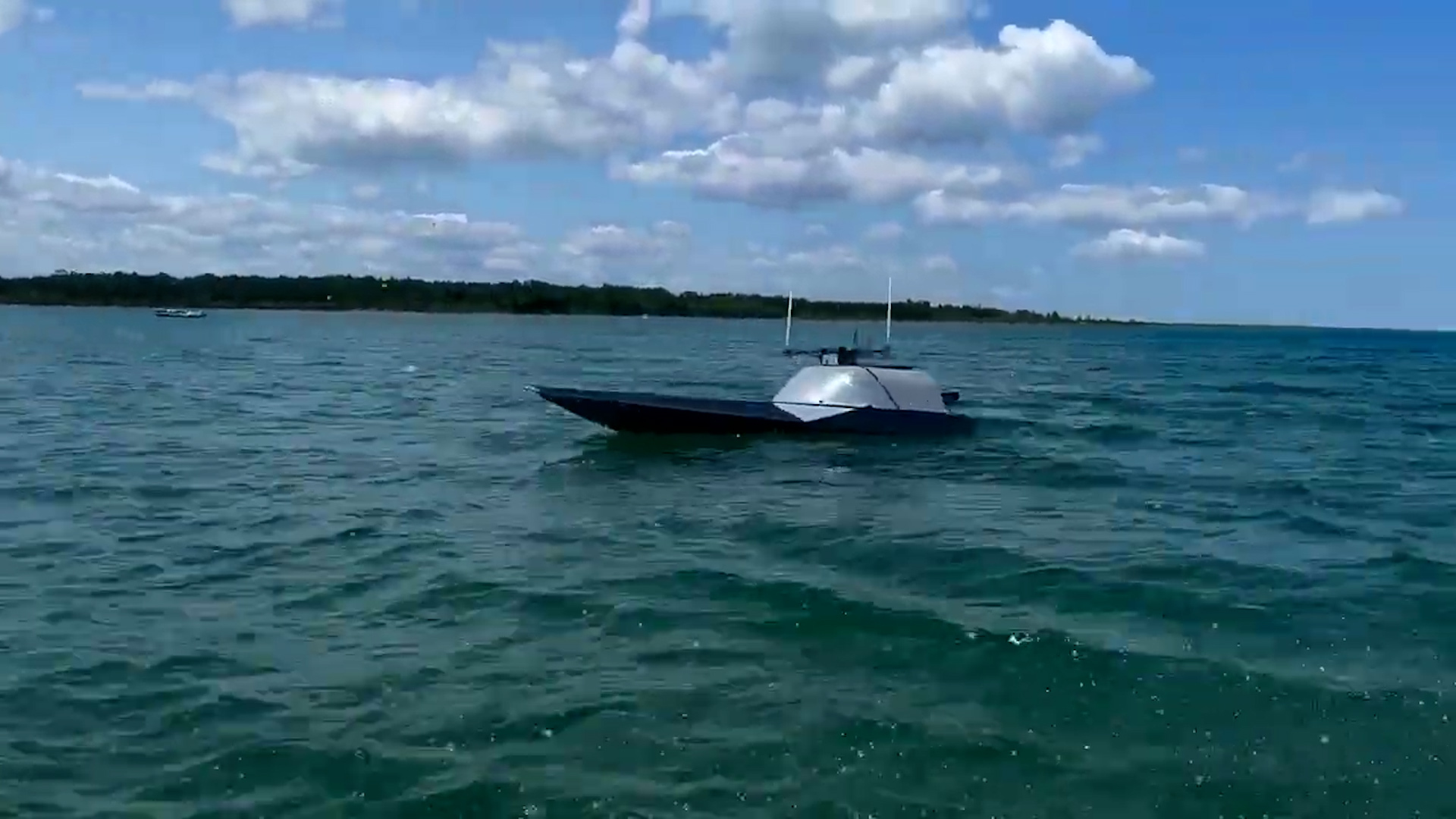
[RYAN ROBERTSON]
If you are a fan of the show, you probably heard us talk before about EpiSci, a software development firm out of Southern California. It has been a big year for the startup.
[RYAN ROBERTSON]
In May, it was part of an effort that put Secretary of the Air Force Frank Kendall in the cockpit of an AI-piloted F-16 for a capabilities demonstration. And in June, it was acquired by Merlin, a Boston-based company also working in the AI agent arena.
[RYAN ROBERTSON]
And recently, the tech wizards took part in ‘Silent Swarm 2024,’ where they took their AI pilot out of the air and put it into the captain’s seat on the water at the Alpena Combat Readiness Center in Michigan.
[RYAN ROBERTSON]
The annual exercise featured around 60 technologies and more than 500 participants. For EpiSci, it was a chance to test the capabilities of its tech in a contested environment. In coach-speak, it was essentially offense against defense in a maritime battlespace.
[JOSH BLOOM]
Having the ability to really scale up to, you know, six boats at Silent Swarm, we’ve since scaled up to 10 boats in testing, and they’ve done this in a matter of, like, six months, they’ve gone from no boats all the way to being able to manufacture they’ve got 15 right now. So just getting out on the water and actually testing in these kind of realistic environments is something that really hasn’t been done before this.
[RYAN ROBERTSON]
The exercise highlighted the abilities of the team’s cross-domain collaborative autonomy technology. Think of it as plug and play. Taking their AI out of a jet and running it on six HAVOC-AI Rampage USVs. Using a single command and control operator to carry out the mission.
[JOSH BLOOM]
That’s really what the algorithms have been developed for, and they’re built in such a way that a C2 operator only has to interface with one of these boats in order to interface with the entire swarm. So we have message passing that will take a single operator command and distribute it to the rest of the swarm.
[RYAN ROBERTSON]
EpiSci’s founder, president, and CEO, Bo Ryu, says working on the water, rather than in the air, provides a very practical means to grow their efforts.
[BO RYU]
Maritime is actually accelerating a lot faster, obviously, because aircraft are very hard to modify and add something new without certification. Experimentally, we are doing really well, but we’ll see how fast it comes down. But in the water, it’s a very different ball game when it comes to speed and scale.
[RYAN ROBERTSON]
As the Department of Defense continued to reshape its forces for potential conflicts with near-peer adversaries, speed and scale remained at the top of the list when it came to bolstering America’s defense efforts. EpiSci saw having that plug-and-play functionality as a driver in getting its technology into the hands of the people who needed it.
[BO RYU]
They cannot deal with 10 different autonomy solutions; it’s just a nightmare. The government has a very clear goal: can they find a vendor with a technology solution that can rapidly adapt to a new platform without waiting for six months? Can we do it in two weeks? Four weeks? One week? When they change it, that’s really what our team started demonstrating.
[RYAN ROBERTSON]
While integration with multiple platforms remained an overarching goal of EpiSci, Ryu acknowledged there was another learning curve that needed to happen to truly bring this technology to the fight: the human aspect.
[BO RYU]
Military leadership should not think of using autonomous vehicles the same way they would with an experienced warfighter in the driver’s seat. It is going to take a recalibration of risk assessment to meet specific objectives, as threats can now be addressed in ways they never could with lives at stake.











